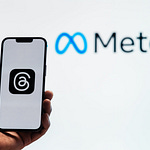Netflix reported its Q1 2022 earnings yesterday and reported a slow down in consumer growth that was unexpected to many except keen readers of The Transcript. We have been covering the streaming slowdown throughout the past 3 months in our newsletter and podcast.
Attached is a clip from our podcast from 2 weeks ago discussing a potential big earnings miss for Netflix. Specifically, take a look at this quote from Scott:
“I think there are some pretty strong headwinds to Netflix growth that I keep hearing, not only in earnings calls around different companies that we're listening to, but I'm also hearing it just anecdotally from friends and family and people who are thinking about changing their Netflix subscription, or, you know, dropping some of these SVOD subscriptions. The fact that churn is going up It's a, it's a real headwind essentially for these stocks that for Netflix, especially they could overhang for a bit. So if you're a Netflix shareholder this could be a decent time to be trimming…These sorts of anecdotes are the things that big earnings misses are made of, like I could totally see next quarter, we have Netflix down 20% on the day that they reported earnings because they miss subscriber numbers. This is something that people should be paying attention to”
We have been following the rising churn on streaming services for most of Q1:
"In the SVOD space, U.S subscriptions overall are not materially growing despite the ever-increasing number of options available to viewers. We believe the most attractive remaining growth opportunity for SVOD is overseas -- you've already seen, I think, probably the 9% or so reduction in SVOD hours that are procured in the last period last -- I think it was the last quarter over prior years. People are churning off of those SVODs, I think, and learning how to manage them better." - Chicken Soup for the Soul Entertainment (CSSE) CEO William Rouhana
From the earnings call yesterday, we note that Netflix is considering an ad-based tier just as Disney did in March:
“And those who have followed Netflix know that I've been against the complexity of advertising and a big fan of the simplicity of subscription. But as much I'm a fan of that, I'm a bigger fan of consumer choice. And allowing consumers who would like to have a lower price and are advertising-tolerant get what they want makes a lot of sense. So that's something we're looking at now. We're trying to figure out over the next year or 2. But think of us as quite open to offering even lower prices with advertising as a consumer choice” - Netflix (NFLX) Co-CEO Reed Hastings
"We have also had an incredible amount of advertiser demand ever since the launch of Disney+ and as you can see from our results in addressable advertising out of our Hulu business, we have more demand than supply.… And it's also going to be great for the advertisers because we have a very unique audience here. It is a family audience, we will be very careful about the ads we take, how we put them into our content. And we've learned a lot over the last couple of years about what kind of content lends itself to natural breaks..." - The Walt Disney Company (DIS) CFO Christine McCarthy
This is more in line with a theme we have been following closely of subscription fatigue and openness to ad-supported tiers. Too many subscriptions have led consumers to start seeking and being more open to ad-supported content:
"It started out that most of us did our consuming on -- and I'm speaking as a consumer for a minute. Most of us did our consumption on Amazon and Netflix SVOD offerings. And then over time, we were introduced to things like Hulu and now so many others that are AVOD or hybrid like in Hulu's case. And as we've learned from so many of them, it's often a better way for them to monetize to be an AVOD company. And it also is what the consumer typically prefers. As in Hulu's case, 80% of consumers prefer the ads. Now some of that has been a phenomenon for many years, but that predates what I'll describe as -- is now peaking, which is subscription fatigue. And so that was true at Hulu many years ago. It's still -- it's even more true today because, of course, there's more subscriptions. It takes more work to figure out where to watch what you want to watch. It is. And for the average American household to be paying for 15 subscriptions instead of 2 or 3 that they were a few years ago, the cost is prohibitive. So insert AVOD. And now all of those companies are graded on subscribers. How many subscribers do they get? And just some pretty impressive numbers across the board. And just from many of them, as we watch how they reported on their last year. But in order for them to keep those subscribers, they have to make it affordable. So we expect to see more and more of them adopting advertising. They need that to be relevant so that they show fewer ads that are more relevant to the user so that they keep an amazing experience for the consumer, but then the consumer can also afford it. So I believe strongly that the most promising part of our future is in CTV because of those market dynamics." - Trade Desk (TTD) CEO Jeffrey Green
There is a key theme in play here. Do subscribe for more of such actionable investment catalysts from our team:











